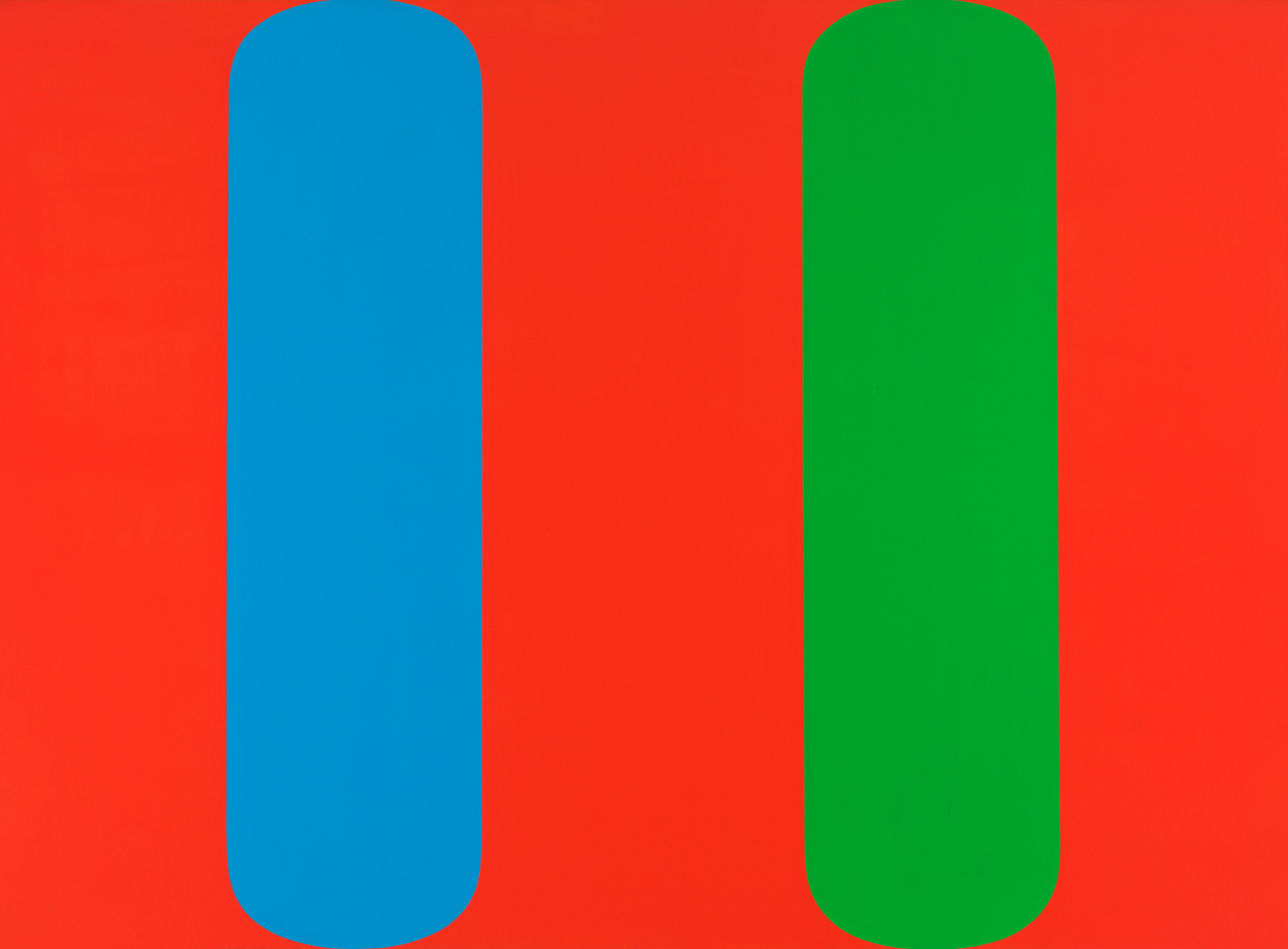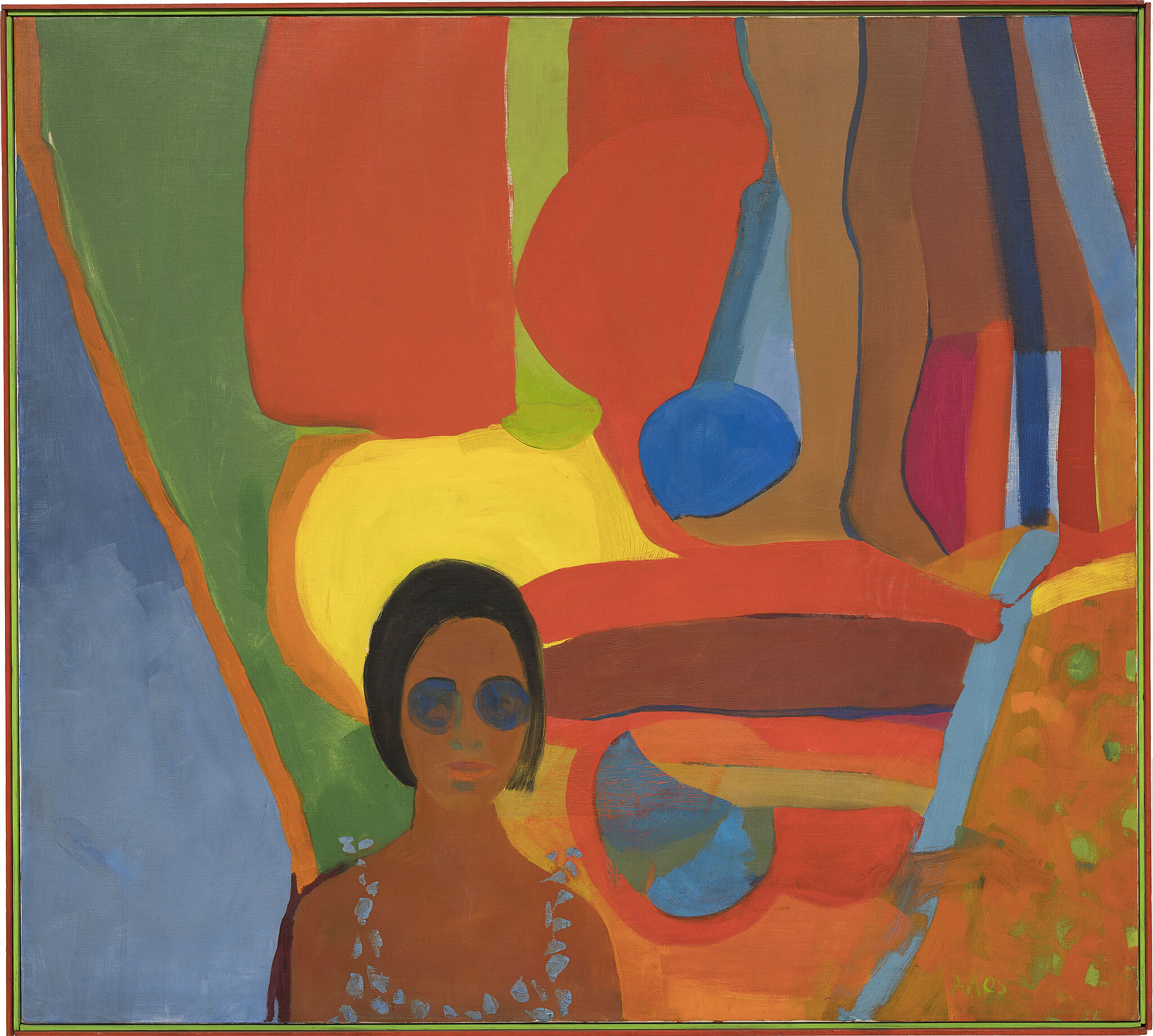Not on view
Date
1964
Classification
Paintings
Medium
Oil on linen
Dimensions
Overall: 73 1/4 × 100 3/8in. (186.1 × 255 cm)
Accession number
66.80
Credit line
Whitney Museum of American Art, New York; purchase, with funds from the Friends of the Whitney Museum of American Art
Rights and reproductions
© Ellsworth Kelly Foundation
Audio
-
Ellsworth Kelly, Blue Green Red, 1964
In Spilling Over (Spanish)
0:00
Ellsworth Kelly, Blue Green Red, 1964
0:00
Narrador: En esta obra, Ellsworth Kelly realizó una pintura abstracta a partir de los tres tonos que se mezclan para producir la televisión a color, un invento reciente en la época en que el artista terminó esta obra.
Darby English: Aquí, Kelly revisa los elementos básicos de la pintura—las relaciones de color, la composición o ausencia de composición—e intenta presentar dichos elementos básicos en su forma esencial, sin sacrificar su espíritu.
Narrador: El historiador de arte Darby English.
Darby English: Imagínese ser un artista o alguien que intentar ser artista y recurrir a un manual que presenta la información básica sobre las formas, los colores y la composición. Encuentra muchos cuadros, ve muchas cosas presentadas en secuencias y jerarquías, descubre muchos elementos organizados de manera muy legible en relaciones diagramáticas de modo que, por así decirlo, cualquiera que las vea pueda aprender sus principios.
Las preguntas de Kelly parecieran ser: ¿cómo puedo presentar la información básica sin la frialdad ni la abstracción de un diagrama? Podría decirse que, hasta cierto punto, es como enseñar sin didactismo.
-
0:00
Ellsworth Kelly, Blue Green Red, 1964
0:00
Narrator: In this painting, Ellsworth Kelly made an abstract painting out of the three hues mixed to produce color television—a recent invention at the time he completed this work.
Darby English: Kelly is looking at the basics of painting making: color relationships, composition, non-composition, and he’s trying to present the basics as the basics that they are—without losing the soul.
Narrator: Art historian Darby English.
Darby English: Imagine being an artist or being someone trying to be an artist and going to a handbook with the basic information about shapes and colors and composition laid out before you, you see a lot of charts, you see a lot of things presented in sequence and in hierarchies, you see a lot of things set into very legible diagrammatic relationships so that, quote, unquote, anyone who comes along and picks it up can learn the principles.
Kelly’s question seems to be, how can I present the basic information in a way that lacks the coldness and the abstractness of a diagram? It’s in a way like teaching without didacticism, if that makes any sense.
Exhibitions
Installation photography
-
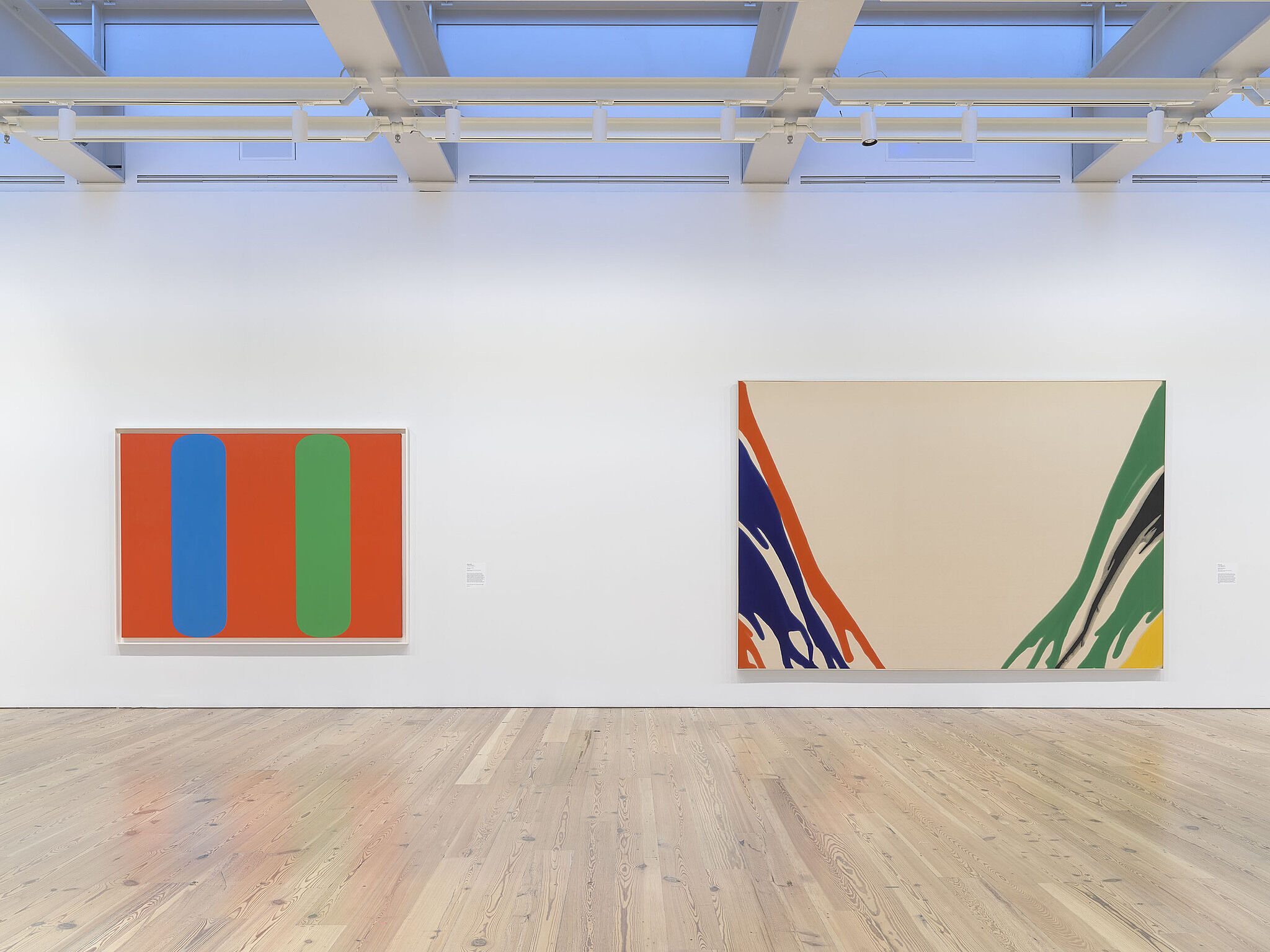

Installation view of Spilling Over: Painting Color in the 1960s (Whitney Museum of American Art, New York, March 29-August 2019). From left to right: Ellsworth Kelly, Blue Green Red, 1964; Morris Louis, Gamma Delta, 1959-60. Photograph by Ron Amstutz
From the exhibition Spilling Over: Painting Color in the 1960s
-
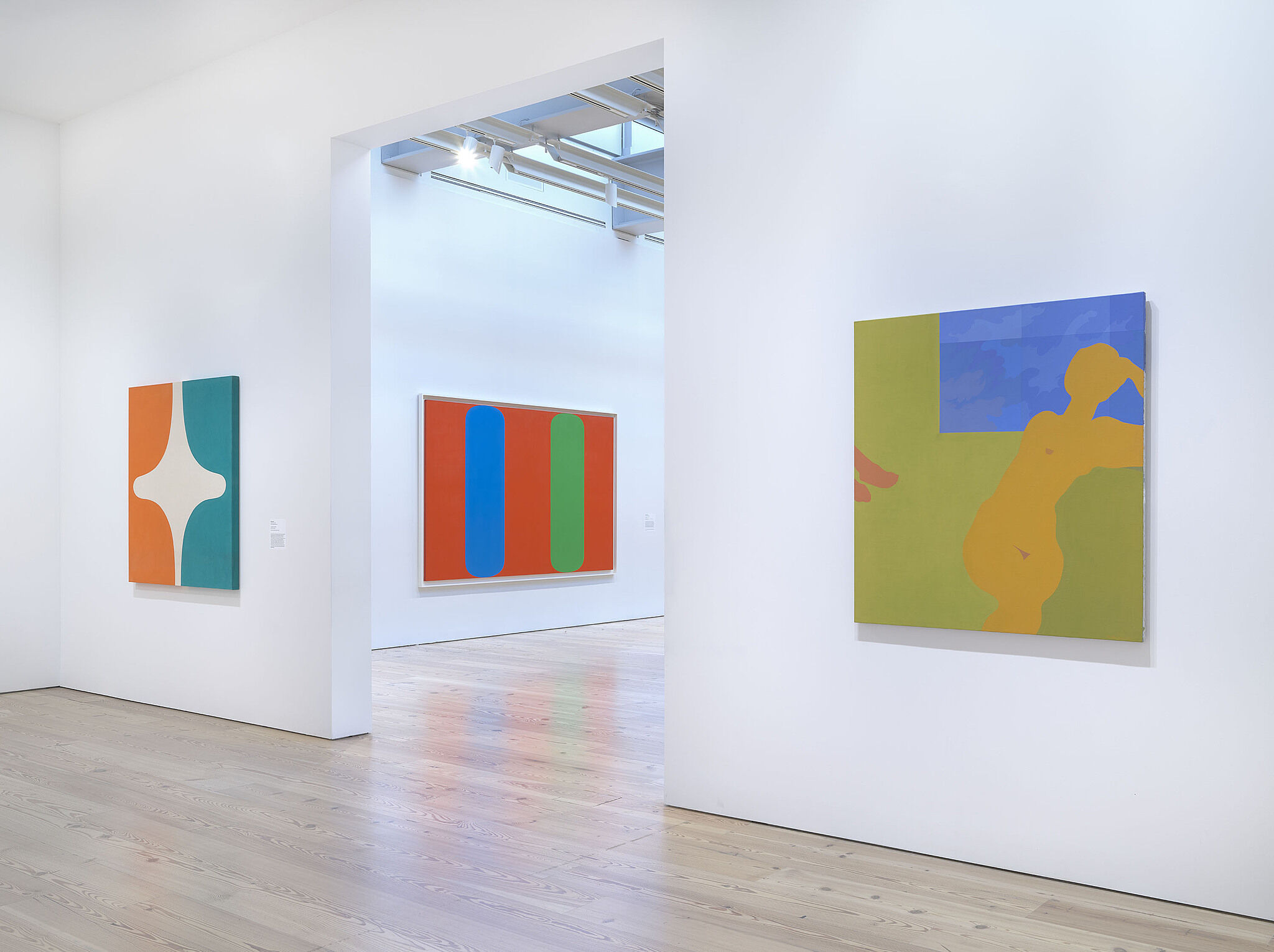

Installation view of Spilling Over: Painting Color in the 1960s (Whitney Museum of American Art, New York, March 29-August 2019). From left to right: Marcia Hafif, 72., March 1965, 1965; Ellsworth Kelly, Blue Green Red, 1964; Kay WalkingStick, April Contemplating May, 1972. Photograph by Ron Amstutz
From the exhibition Spilling Over: Painting Color in the 1960s
-
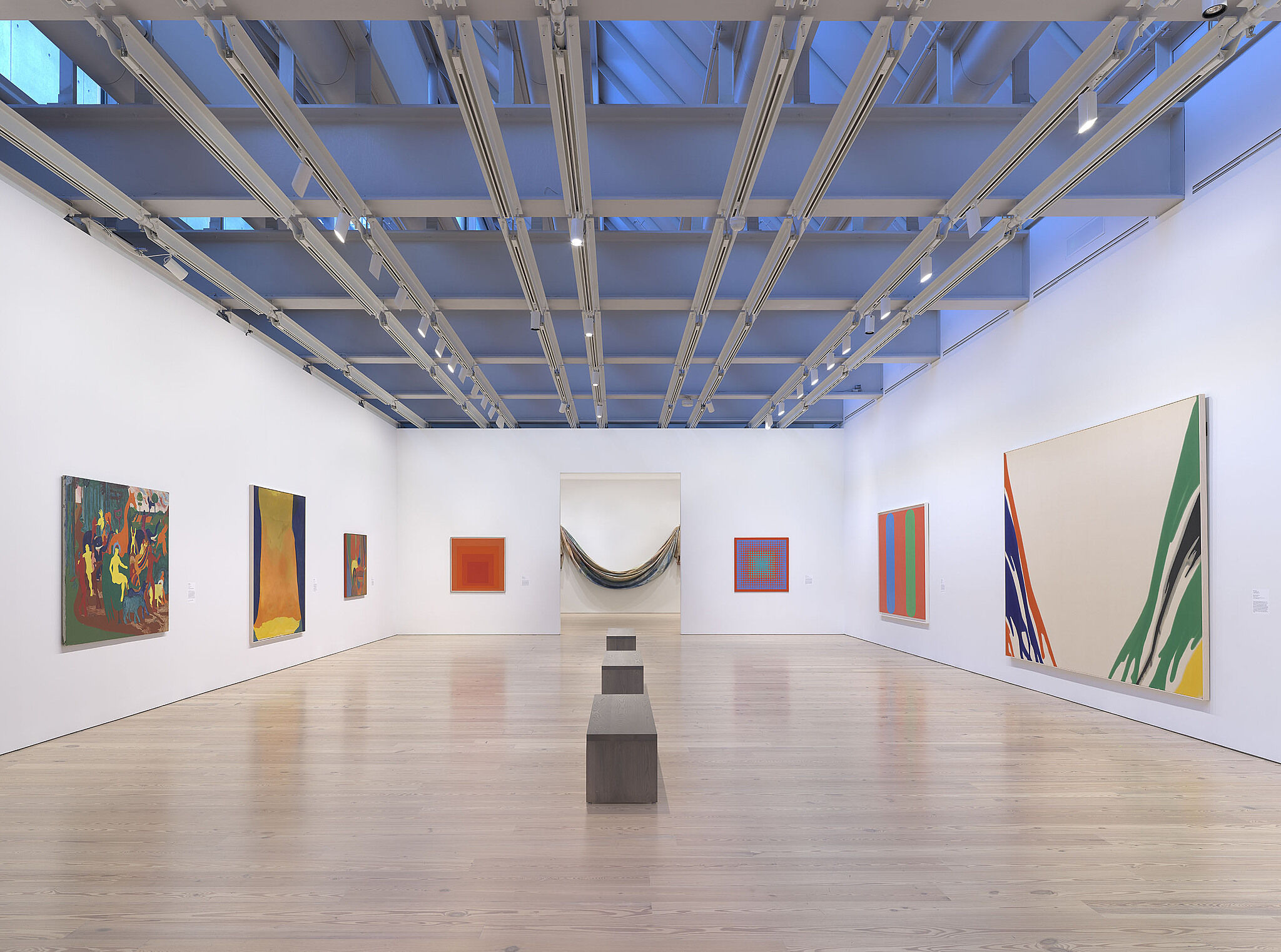

Installation view of Spilling Over: Painting Color in the 1960s (Whitney Museum of American Art, New York, March 29-August 2019). From left to right: Bob Thompson, Triumph of Bacchus, 1964; Helen Frankenthaler, Orange Mood, 1966; Emma Amos, Baby, 1966; Josef Albers, Homage to the Square: “Wait”, 1967; Sam Gilliam, Bow Form Construction, 1968; Richard Anuszkiewicz, The Fourth of the Three, 1963; Ellsworth Kelly, Blue Green Red, 1964; Morris Louis, Gamma Delta, 1959-60. Photograph by Ron Amstutz
From the exhibition Spilling Over: Painting Color in the 1960s

